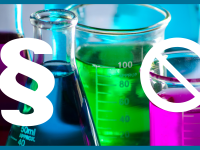Microplastics: 10 Facts by Dr. Imari Walker

Dr. Imari Walker presents 10 facts you need to know about microplastics:
Fact 1: microplastics are not that small. Dr. Walker says a microplastic is defined as an element smaller than five millimeters, and there are further criteria involved to categorize them such as the shape or color.
Fact 2: microplastics can be a food source for animals due to certain properties. Not only do animals perceive microplastics as potential food sources, but interestingly the chemicals used to treat the products can exhibit an attractive smell and taste quality which lure the interest of feeding animals. Unfortunately, the ingestion of microplastics causes much harm and can lead to other animals higher up in the food chain preying on contaminated organisms and animals to also carry the burden of disease.
Fact 3: there can be thousands of chemicals added to plastics for several product-enhancing properties. These chemicals are contained in the microplastics and thereby are able to further spread and contaminate the environment and animal as well as population health. A particularly harmful substance present in microplastics are those exhibiting estrogenic properties, which cause severe implications for hormonal wellbeing in animals and especially impact animal fertility and reproductivity.
Fact 4: the majority of microplastics end up in the ocean. Indeed, 60% of plastics produced globally are found up in these bodies of water.
Fact 5: microplastics are present in our food. Their presence is found in meat sources as well as everyday itesm such as tea bags. In relation to this, studies have showed that microplastics are also readily found in human feces.
Fact 6: microplastics are present in dust. For example, their presence is found in outdoor dust through such routes as shedding from car tires. However, inhalation of indoor dusts is actually more common and sources of microplastics in indoor dust are released by furniture and other plastic-based household items.
Fact 7: majority of microplastics are found in our clothes. All forms of synthetic fibers release microplastics, and therefore textiles are responsible for the majority of microplastic pollution.
Fact 8: microplastics are also found in our skincare products, an example of which is their presence in glitter-based cosmetics.
Fact 9: microplastics are also found in various types of drinks, such as water, beer, wine and tea.
Fact 10: microplastics can be further disintegrated into nanoplastics. These very small particles need to be further studied to assess their overall impact on human health.






